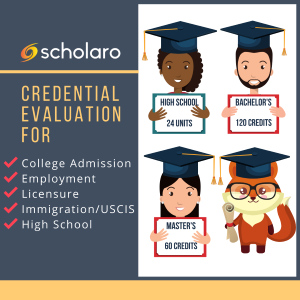Earning a high school diploma is a crucial step to opening doors to the career that you want to have. Those who graduate with a high school diploma have greater access to opportunities and face fewer barriers in their pursuit of the job they want rather than the jobs they settle for because they lack the necessary qualifications. A person’s financial earning capacity depends on whether they have a high school diploma or the equivalent. High school dropouts, making minimum wage would earn approximately $290 per week (at $7.25 per hour), while a high school graduate earns slightly more, which increases weekly earnings by $100 to $200 weekly, resulting in nearly $600 more per month and $7200 per year.
As the United States economic disparity continues to worsen and the work force has expanded to include a highly competitive global labor pool, the unemployment rate of high school drop outs has more than doubled as compared to the average unemployment rate of 8%. As technology grows and the use of the internet expands the labor market requires workers to have more advanced and highly developed skills, which further emphasizes the significance of a high school diploma.
Traditional high schools are still the most common method for earning a high school diploma; however, educators are finding that the traditional high school is failing nearly 58% of United States students. These challenges have made online high school programs increasingly more attractive and offer a feasible alternative to students who are unsuccessful in the traditional high school classroom.
To meet the educational challenges of school districts and the needs of underserved students the Federal and State Statutes require States to provide access to virtual public school programs to serve school-age students residing in the state. These programs are delivered in a virtual setting using technology, intranet, and/or internet methods of communication.
Many states providing online school programs rely on commercial vendors to provide services to local school districts. School age programs for K-12 education are provided by a number of vendors and some programs are also being provided by local school districts. Some of the vendors to choose from are: Aventa, Connections Academy, Florida Virtual and a number of state specific programs. These programs are being recognized for a unique level of involvement and student success by colleges and universities and are considered a good indicator on how well students will perform in college.
Educational outcomes show that school districts are not successfully graduating an acceptable number of students and that the number of graduates continues to decline. Online educational programs are struggling and finding it challenging to meet the statute requirements in lieu of lack of funding, poor implementation and their inability to fit into the current educational structure. The demand for online education is there, but school districts, State Educational Departments and stakeholders have not found a way to implement the system so that it benefits both the local school district, the students and the commercial vendors that are needed to support the programs. Until, these factors can be merged into a collaborative program with mutual benefit and financial support it is unlikely that educators will make a positive impact on the educational attainment of high school students.
Similar to many industrialized countries, educational attainment is one of the primary indicators of social class in the United States. There is a significant correlation between educational attainment, occupation and income which are also top indicators of social class. An individual’s level of education is the greatest barrier to entering the profession of choice and progressing to the desired level of leadership within the field.
Therefore, attainment of a high school education is paramount to one’s ability to achieve success as a productive member of the global workforce and maintain long term financial responsibility. The accessibility of online high school programs offers students an alternative to the traditional classroom, ultimately intending to increase the number of high school students graduating in the United States.

